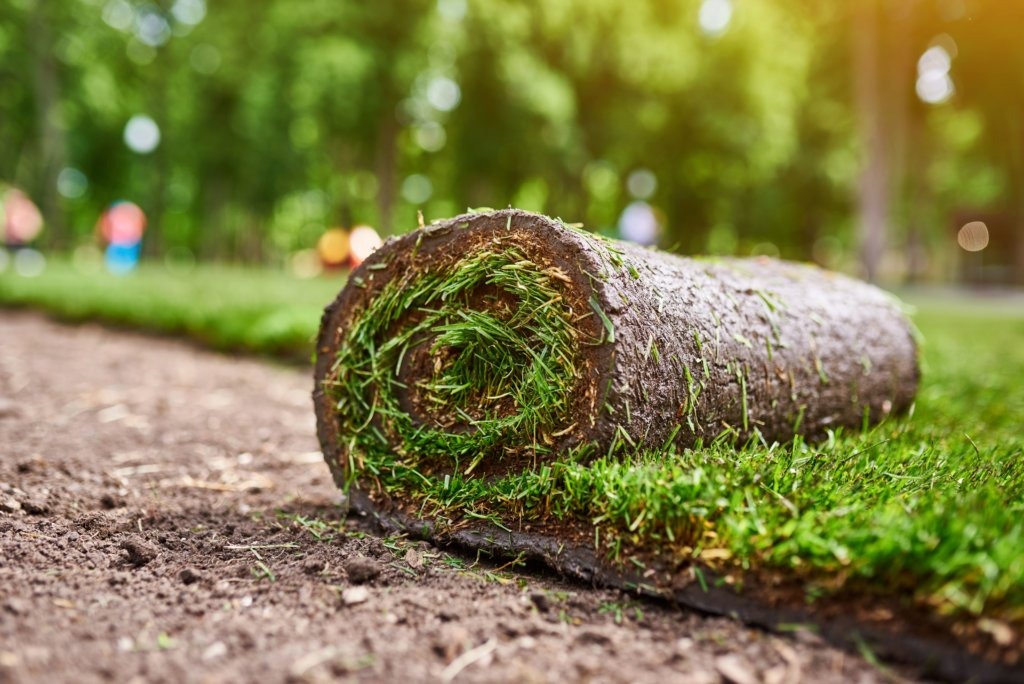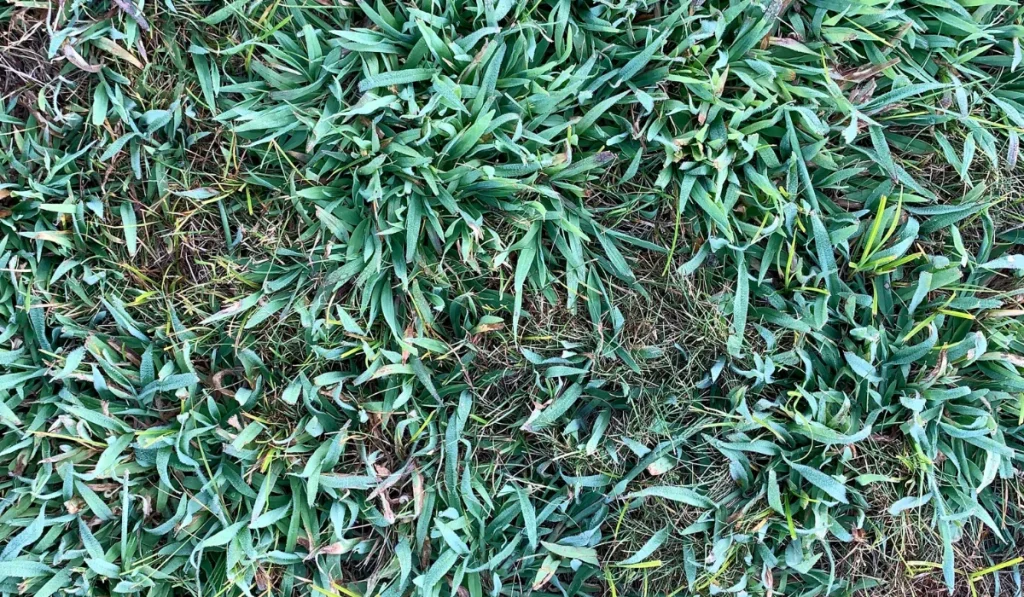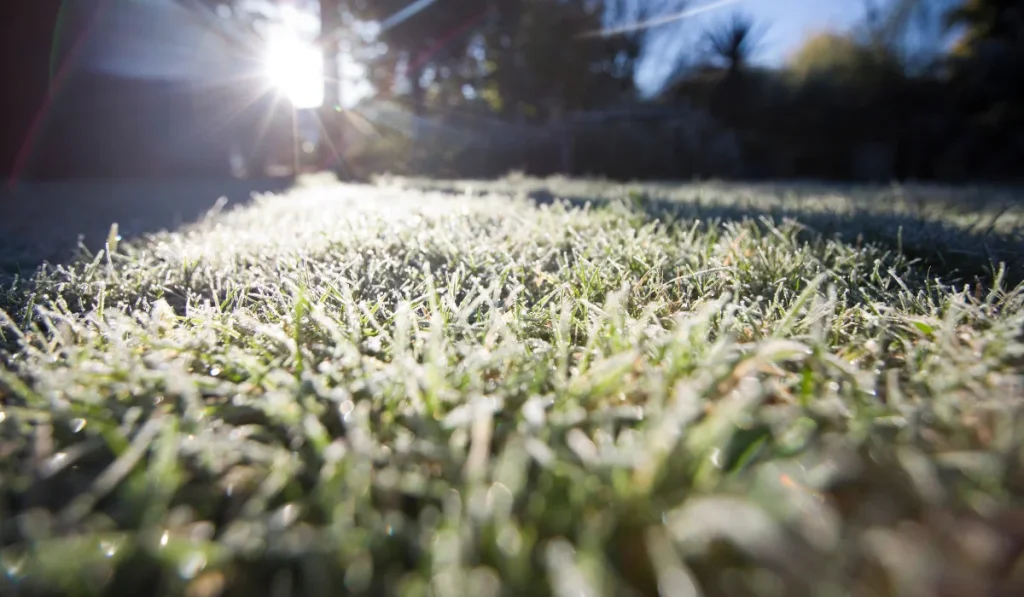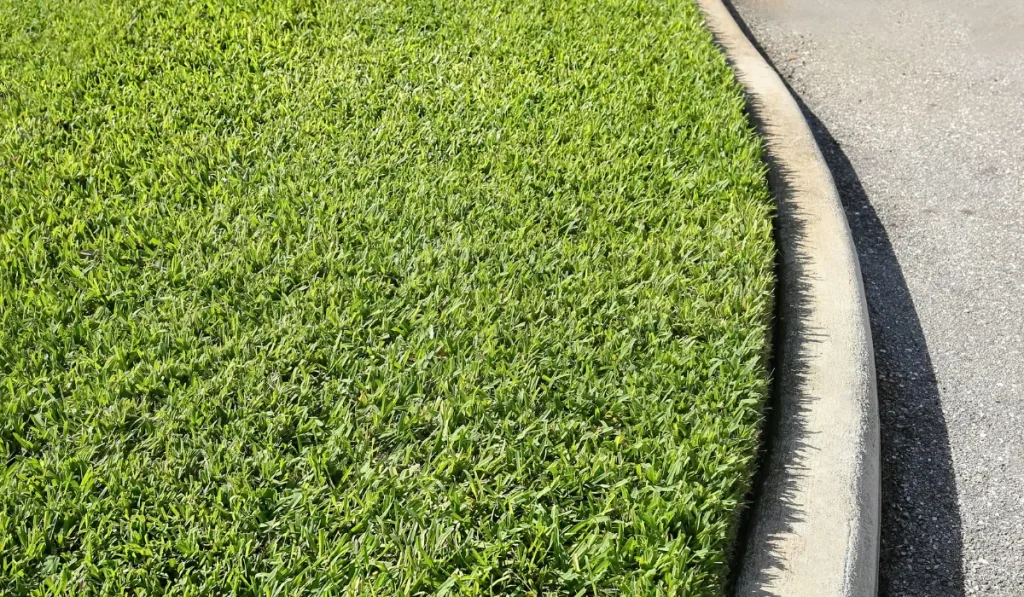If you want to grow a healthy new sod lawn, you need to ensure it has full root establishment before you start walking on it or mowing it.
But how long does sod take to root? Are you going to be stuck avoiding your fresh sod lawn for weeks?
Fortunately, that’s not the case. Most of the time, it only takes two weeks for sod to develop a good root system and just a month for grass roots to be fully developed. There are things you can do in the meantime to ensure healthy growth and the faster development of grass roots.
Whether you are prepping and installing your sod or having a professional do it for you, here’s what you need to know about rooting sod.
Properly Preparing Your Soil
Preparing your soil for new sod is just as important as laying the sod itself!
Before you lay sod, make sure the soil is adequate. Till in any new additions that will help encourage growth, like lime, compost, or sulfur. This will give the sod a fertile bed in which to spread its roots.
You should also make sure the area where the sod will be laid is flat and even. If there are any contours or low points in the yard, this can cause water to collect. Avoid it by thoroughly raking the soil.
Phase 1: Shallow Roots
Sod generally forms a set of roots within 14 days, but these roots are pretty shallow. To ensure that these roots form, you will want to start watering your grass immediately after it is placed. We’ll provide you with more detailed instructions on how to water your sod below.
The initial period of root growth is a very sensitive stage, so you need to avoid walking on your lawn or mowing it during this time. Instead, leave it alone (except for watering) within the first two weeks. Any foot traffic can compact the sod, depriving it of nutrients and water.
Phase 2: Deep Roots
After the first 14 days, you can reduce the amount of watering that you do. Water every other day instead of every day, so the roots have to reach deep down into the soil to find water. This will encourage complete root development.
Deep roots should form within a month or so, but you may begin mowing your lawn after 14 days. Make sure the grass is dry and your mower blades are sharp for this initial mowing, so you don’t damage or rip the sod as you mow!
Encouraging Faster Rooting
There are several ways you can encourage your sod to root faster.
One is to fertilize it. All new lawns, including sod, thrive when quality fertilizer is applied. Fertilizing your sod will help to create a sustainable root system that stands the test of time. Use either a granular fertilizer like Triple 15 or Triple 16 (that’s what we use) or a liquid fertilizer.
You may also want to aerate your lawn about six months to one year after laying sod. Do it again once or twice a year after that. This will allow fertilizer, water, and other essentials to get to the new sod’s roots with ease.
You can also use a lawn roller immediately after you lay the sod. This reduces air pockets between the topsoil and the sod to make sure the two layers properly fuse.
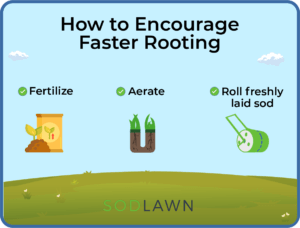
“Plant roots develop in the spring and the fall when things cool down and the environment is not as hot and stressful. That is why doing the proper watering and fertilizing year round helps protect when things are not ideal in the summer. In the winter the plant typically goes semi dormant or dormant depending on the type.”
– Gene Barrow, President of SodLawn
How Can You Tell if Sod is Rooted?
It takes about two weeks for shallow roots to form and six weeks for deep root growth. As long as you prepare and care for your sod properly, it will look gorgeous and green this entire time.
But how do you know if it has successfully rooted?
It’s pretty simple. Just gently lift a corner of a piece of sod. If the roots haven’t developed (or haven’t developed fully), you will find that there’s no resistance when you lift the sod. If it has rooted, it should be somewhat difficult for you to lift the sod.
If your sod isn’t rooting, it could be because the roots are struggling to break through compacted soil. Aerating after the fact can help, but it’s much more effective if you can prevent this by rototilling before putting down sod.
How Long After Laying Sod Can You Walk On It?
You should find that your sod sets roots within two weeks.
On average, you should wait until your lawn has those initial roots to walk on it. Wait two weeks before you step on your lawn, but double-check that it’s set roots first before you do.
That way, you can be sure you will not damage your sod by walking on it too soon!
Can You Water New Sod Too Much?
The key to growing healthy new sod is providing it with consistent watering. If you’re putting down new sod in the summer, you need to water it regularly throughout the day to prevent it from drying and shrinking.
Your watering frequency should be enough so that it remains consistently and evenly moist at all times for at least two weeks after it has been installed. Then, continue to water it for another two weeks to prevent it from drying out.
Water for a minimum of 45 minutes a day immediately after the installation. After a week, you can cut back to about 15 to 20 minutes of watering time every other day for about one to two inches of water per week.
These are just averages, though, since some types of sod are more drought-tolerant while others need more water.
The best time to water is in the morning, such as around 2 AM. If you water in the afternoon, which is generally the warmest time of day, the water will evaporate instead of being absorbed.
Conclusion
If you’ve successfully laid down and cared for your sod, it should set shallow roots within two weeks. It will be fully installed and ready to go within a month or two.
Be patient and diligent in caring for your sod, and you’ll have a lawn that stays lush and healthy for years to come!
